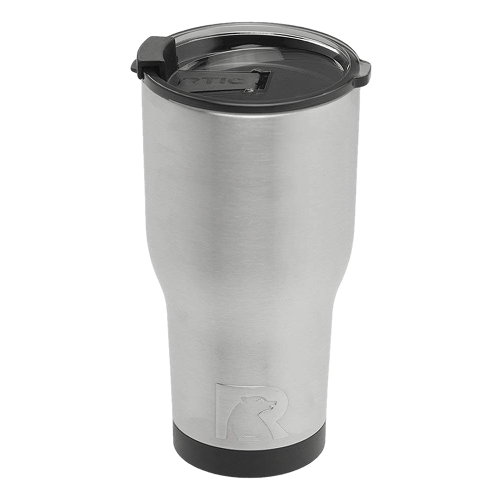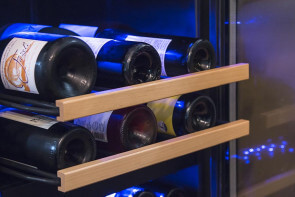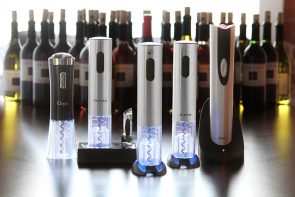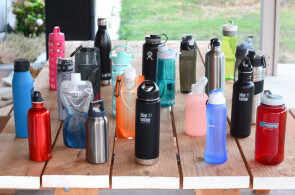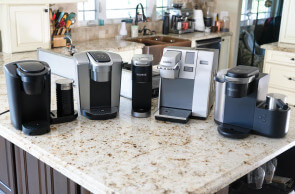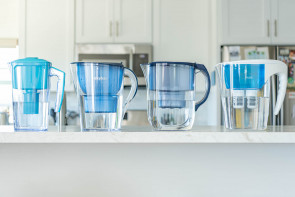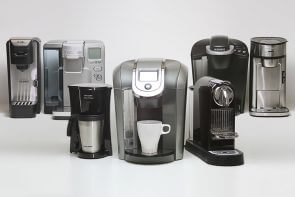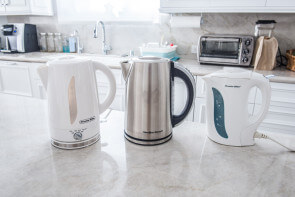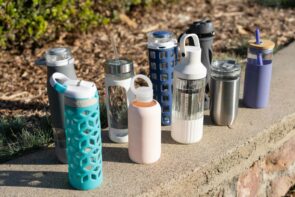
The Best Insulated Tumblers
We spent a month using the best insulated tumblers side by side with water bottles and travel mugs. We found that the RTIC – 30 Ounce Tumbler gives you all the same insulation performance and better leak-proofing at less than half the price of the best-known YETI – Rambler. If you’re willing to pay, YETI does give you a slide-open spout that’s less annoying, though you run the risk of dribbles and drips.
We spent a month using the best insulated tumblers side by side with water bottles and travel mugs. We found that the RTIC – 30 Ounce Tumbler gives you all the same insulation performance and better leak-proofing at less than half the price of the best-known YETI – Rambler. If you’re willing to pay, YETI does give you a slide-open spout that’s less annoying, though you run the risk of dribbles and drips.
Table of contents
- Compare the best insulated tumblers
- Best buy: RTIC – 30 oz Insulated Tumbler
- Upgrade pick: YETI – Rambler
- Other finalists we tested
- How we selected
- Important features to consider
- How we tested
- Should you get a tumbler, water bottle or travel mug?
- The bottom line
Compare the best insulated tumblers

| Brand | Price | Spill Proofing | Capacity (oz) | Spout Stopper |
|---|---|---|---|---|
| 1. RTIC - Insulated Tumbler | $ | ☆☆☆☆☆ | 29.5 | Flip-open |
| 2. YETI - Rambler | $$$$ | ☆☆☆☆ | 27.8 | Magnetic slider |
| 3. Pelican - Traveler | $$ | ☆☆ | 32.4 | Slider |
| 4. Hydro Flask - Insulated Tumbler | $$$$ | ☆ | 30.4 | None |
Best buy: RTIC – 30-Ounce Insulated Tumbler
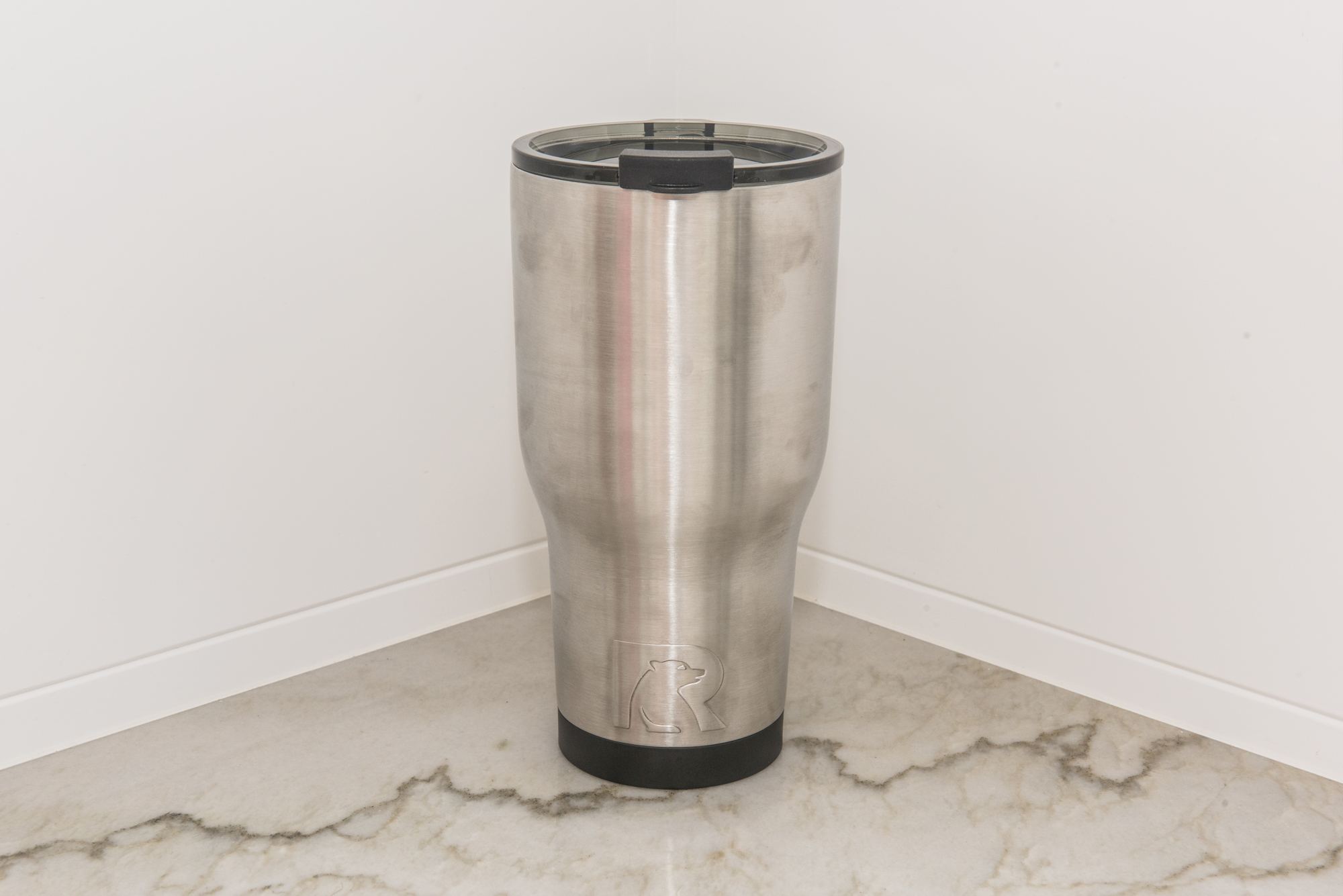
The RTIC – 30-Ounce Insulated Tumbler is the best bargain in this lineup, and it’s our top pick overall. The stopper actually prevents some spills, and compatible accessories are easy to find. This is an updated version of the RTIC, but the old all-metal-no-stopper version is still available.
Without buying and trying out these tumblers, it’s easy to make assumptions about performance. “Maybe the steel is thinner,” you think. “Maybe the vacuum is actually less of a vacuum.” Our testing shows, though, that If there’s anything fancy that other brands are doing to improve theoretical insulation performance, the giant plastic lid is an equalizer that levels the playing field.
In every case we’ve seen (even among top-class insulating mugs and bottles from Zojirushi, Thermos and Hydro Flask) a big lid means mediocre insulation. Improving the insulation of a tumbler without making the lid area smaller is like adding better insulation to your house while the doorways and windows are sealed with plastic sheets.
Best Buy: RTIC - 30-Ounce Insulated Tumbler
RTIC gives you all the insulation of the other brands and better leak prevention than anyone else. The plastic base is a drawback, but the price makes this a real winner. If you're picky enough about durability or insulation that a budget model is a turn-off, you should probably check out a travel mug or thermos anyhow.
So, what is the difference that brings the price down? The plastic “foot” on this new RTIC is less tough than the YETI if you drop it on a hard surface, but the difference in price more than makes up for that.
Perhaps the most important consideration when it comes to recommending a bargain-priced tumbler is availability: Ozark Trail, Zak! Designs, BEAST and a dozen other companies are also producing similar tumblers at low price points, but inventory (and new brands) come and go seasonally. RTIC has been around since the beginning of the fake-YETI game, and availability online is always good. That popularity also means that accessories (like this handle) will actually be designed to fit this cup.
The main feature that bumped this tumbler to the top of our lineup is the spill-proof lid. If you don’t want the flip-cap to stick up into your face when you’re drinking, the older version of the RTIC with no stopper is going to be just as good at insulating your drink. Note that the outer dimensions are slightly different; old-style handles don’t fit new-style mugs with the plastic foot.
Key takeaways:
- The RTIC – 30-Ounce Insulated Tumbler is a bargain-priced drink vessel that will keep your beverage just as cold (or hot) as other brands.
- This flip-up lid stopper is the only option we found that really prevents leaks, though it’s still not safe to put in a bag.
- RTIC compromises on quality very slightly, with some plastic parts, but the vacuum insulation is all that it needs to be.
Upgrade pick: YETI – Rambler
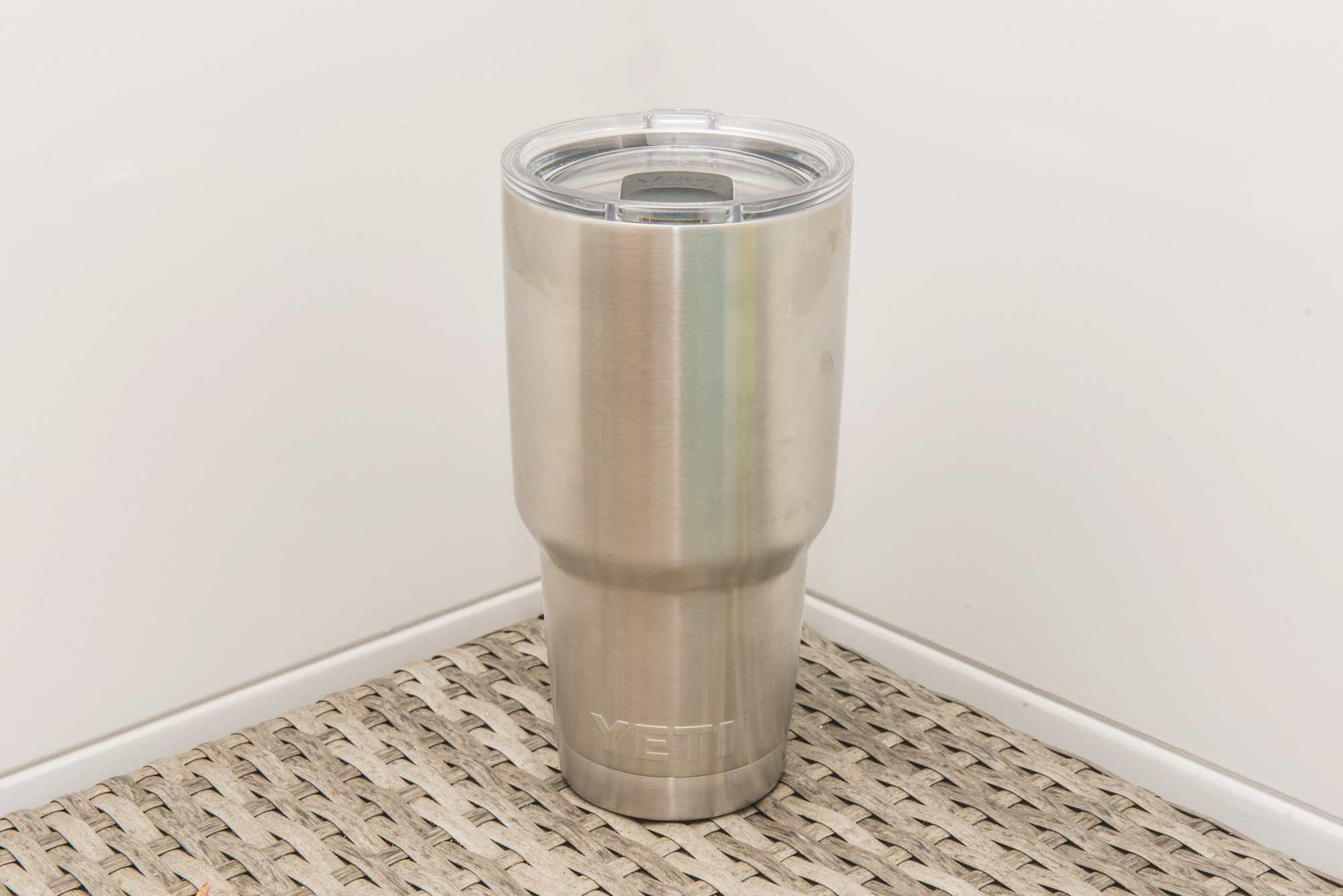
If you want something better than a budget-priced tumbler, there’s no way to beat the original YETI – Rambler. YETI didn’t technically invent this category of drinkware (similar insulated travel mugs have been around for a very long time), but they created a new market with big 30-ounce tumblers targeted at outdoor enthusiasts who loved their coolers for camping and tailgating.
This is not a Yeti thermos: You can easily beat this kind of insulation with the narrow-neck bottle from Klean Kanteen, for about the same price. If you want the easy-filling and easy-sipping convenience of a tumbler, YETI has the same performance drawbacks as the other brands.
Upgrade Pick: YETI - Rambler
YETI didn't invent this category, but they made the 30-ounce insulated party cup into a must-have accessory for cold refreshment. The magnetic slider is more convenient than a flip-up stopper, but it doesn't make this cup leakproof. The main reason to pick this tumbler is if you've gotta have that logo.
The one category YETI manages to squeak ahead of some competition is in spill prevention. The Rambler’s slide cover actually stops most (but not all) leakage and only lets drops escape. In comparison, the Pelican will dribble out a stream. The RTIC is more leak-proof, but the YETI really is ready for those times when your friend fires up the motor on the jet boat and you haven’t finished your drink.
If you’re looking for a YETI for coffee that’s a little different than the classic 30-Ounce Rambler, there’s also the YETI – 14-Ounce Rambler Mug for about $10 less. The small amount of coffee it holds compared to the large lid surface means it’s only going to keep your coffee hot for about 45 minutes, but compared to six minutes for an open-top ceramic mug for some people this is exactly what they’re looking for.
The other case where this is an obvious pick is if you’re buying a gift. Nothing says “I only sorta love you” like a knock-off version of a trendy product. If you know someone who actually wants a YETI, the price difference is worth it.
Key takeaways:
- The YETI – Rambler is the product that got everyone buzzing about giant insulated cups, and they’re still the most recognizable.
- The price of this tumbler is high, and it doesn’t keep your drink any hotter or colder than others.
- You’ll get drips if you hold the YETI upside down or drop it on the floor, but this lid is good at keeping your drink inside.
Other finalists we tested
Pelican – Traveler
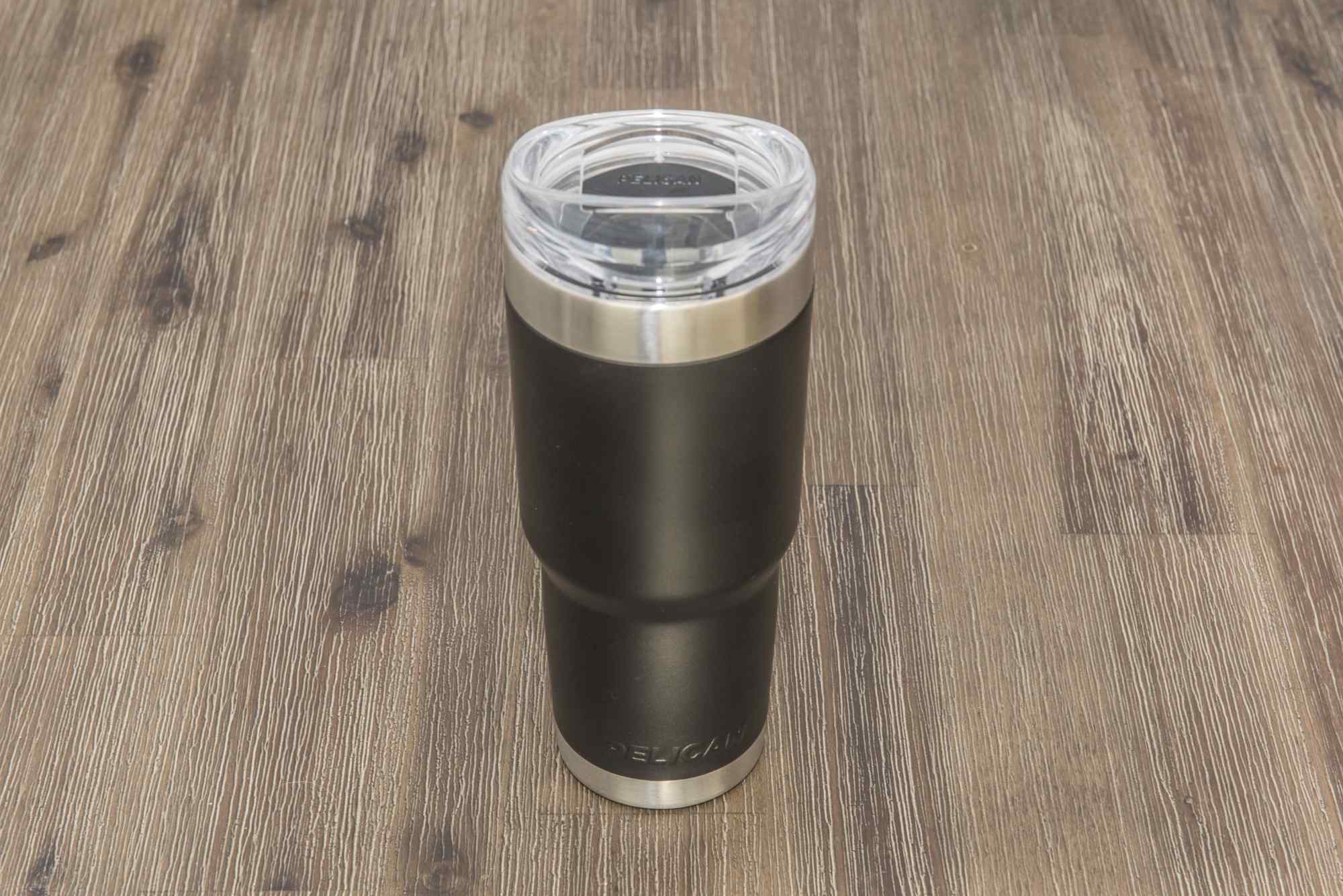
Note: The 32oz model we tested has been sold out since July, so we’ve updated all links to point to the 22 oz model of the same design.
In many ways, the Pelican – Traveler hits the optimal price to performance ratio in this lineup, but that doesn’t make it the best buy.
Pelican is a company that makes quality flight cases for sensitive equipment, and in many ways they’re like YETI: a small company who established a niche with a specific product, then started building a brand around it. This tumbler is a bit different than the rest, and if you love the screw-on lid with the bigger spout area it’s a good buy.
The slide-cover lid isn’t as good at sealing against leaks as YETI’s lid, though. It dribbles a small stream if you hold the cup upside down. If you really want to keep your drink in, the flip-up lid on the RTIC (or the old-style Pelican Snap Lid, which you can still buy in 2018) is a better choice.
Hydro Flask – Insulated Tumbler
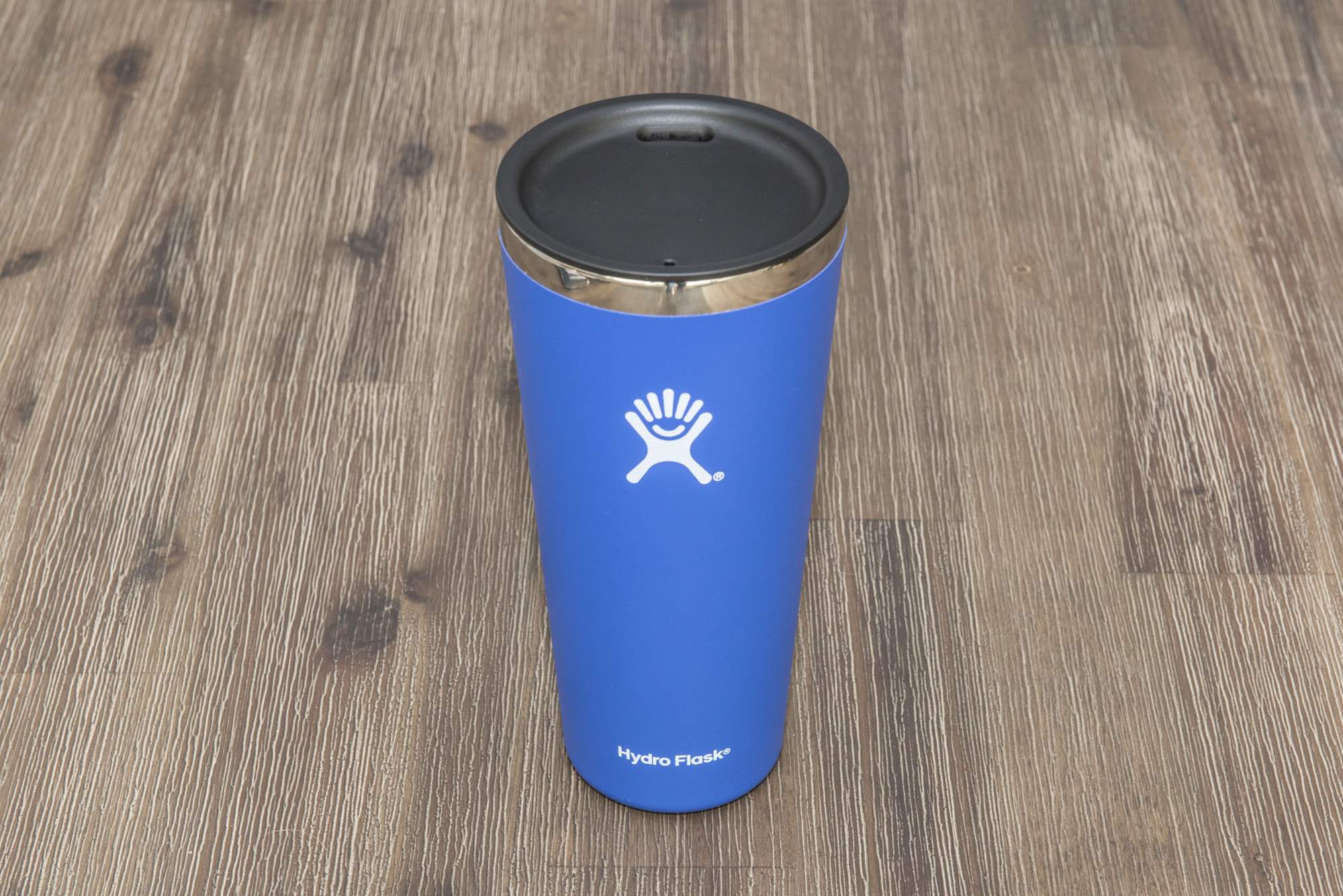
The Hydro Flask – 32 Ounce Insulated Tumbler is a notable contender from one of the big names in the world of insulated drinkware. Many publications give it a win for the sleek profile and brand reputation.
About the only feature that really stands out, though, is the straw lid. If you want your insulated tumbler to look like a Big Gulp, this is the way to go. It’s a hefty price tag, though: The straw lid was a $13 accessory for a $40 tumbler when we checked. The basic lid that comes with the tumbler is claimed to be designed for good insulation, but without even a stopper to keep heat from circulating in and out it doesn’t make any difference.
If you or the person you’re buying for already have a Hydro Flask water bottle, buying a matching tumbler for use around the house is a nice touch. They’re good looking tumblers, but they don’t perform any better than the other brands to justify the huge price difference.
How we selected
There are over 20,000 listings on Amazon for “insulated tumbler.” YETI is the undisputed brand king, with a tumbler that’s now even more popular than their ultra-rugged (and expensive) coolers. As with all things that are mass-produced and insanely popular, the number of competitors (and imitations) has expanded just as quickly as YETI’s profit numbers.
We read and watched dozens of YETI tumbler reviews and comparisons to narrow the mile-long list down to four of the best insulated tumbler cups. Wirecutter, as always, provides some in-depth testing, and Saving Freak compares the costs and benefits of the various copycat brands. GearJunkie, like most sites, only passes a verdict on the YETI. What’s Inside tried to do a controlled test, but wound up destroying one of their samples.
In our water bottle review and travel mug review, we’ve seen Klean Kanteen and Hydro Flask go head-to-head competing for a position in our tests. For the first time, Hydro Flask offers something substantially different from Klean Kanteen: a bigger cup that actually matches what everyone else is offering.
Between the various well-known brands that are just barely different from YETI, RTIC is budget-friendly and offers a flip-cap lid that at least compares in functionality to the Mag-Slide on the new YETI lids.
CamelBak has an interesting contender in the KickBak, and it fared well in Wirecutter’s insulation test, but customer reviews of the lid are scathing so we skipped it.
We decided to test only the 30-ounce tumblers in this review, since they’re the most popular and represent a type of drink carrier that’s really different from a 16-ounce travel mug. It also allowed us to compare them directly to our favorite 30-ounce insulated water bottle to see what difference that narrower opening makes. We selected representatives from a range of prices to see if insulation quality really changes when you buy a $40 tumbler instead of a $16 tumbler.
Important features to consider
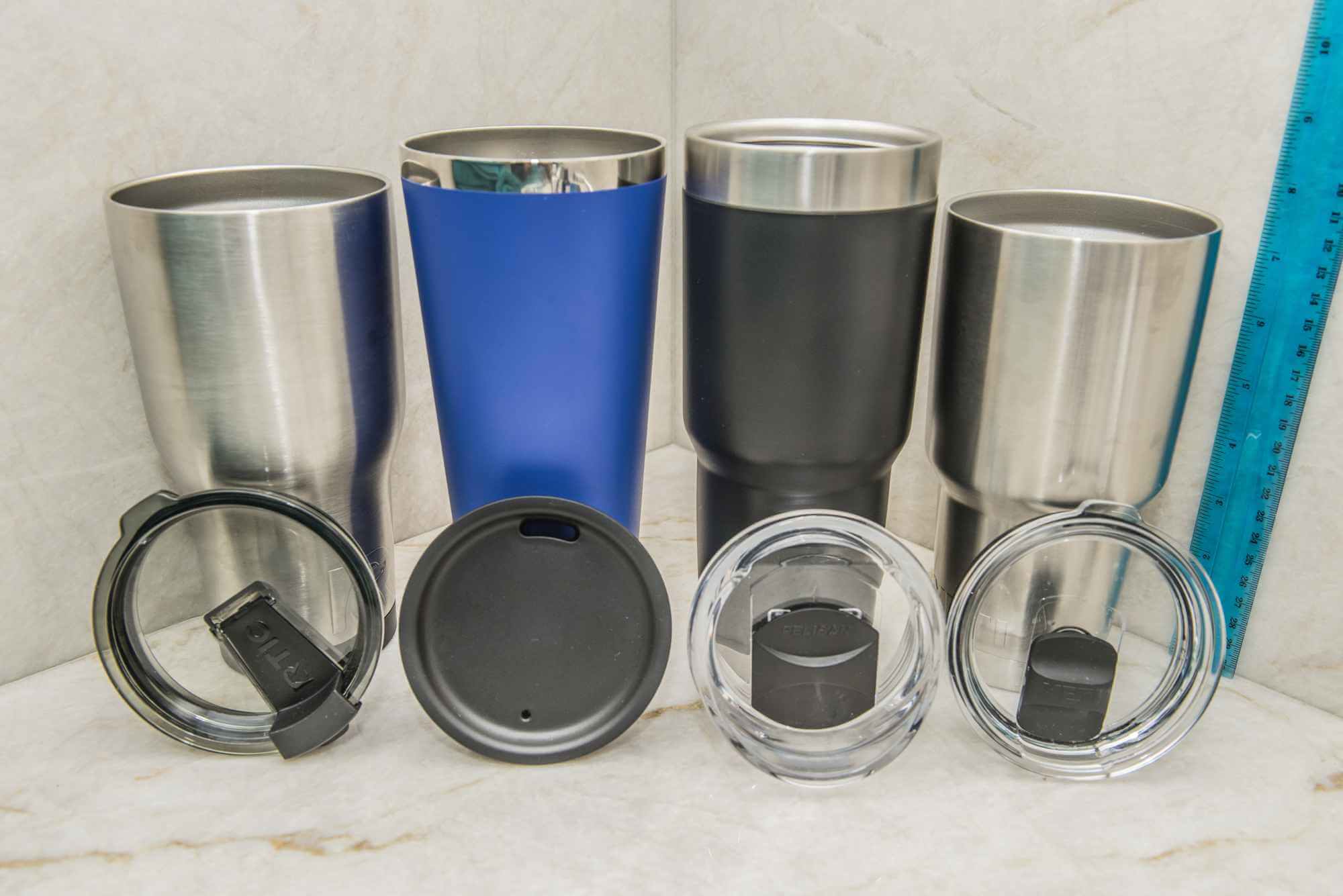
Size: The most popular tumblers hold around 30 ounces, and among the friends and coworkers who use them daily, that was unanimously the preferred size for sipping cold beverages or ice water.
Spout stoppers: Flip-up stoppers and slide-over stoppers are the two common approaches to keeping a tumbler closed. Look closely at what you’re buying, though: Many tumblers are made with a few different lid styles if you look for them.
Base diameter: Do you need to keep your tumbler in a car cup holder? Check the size just to be sure, but most cup holders are designed to hold extra-large restaurant-size paper cups, which these tumblers mimic.
Painted, coated or brushed finish: Color coordination is a nice benefit of painted or powder-coated tumblers, but they’ll show signs of wear eventually. Brushed stainless steel looks great even if it gets scratched, and there’s nothing that will peel off after a few years.
How we tested
Everyday use tests
Our tester used these tumblers in place of his usual water bottle and coffee mug for two weeks. At work, around the house, in the car and at the park, they all kept beverages handy. The 30-ounce size was bigger than our testers preferred for a morning cup of coffee, but for keeping hydrated (or keeping a rum and coke chilled) it’s just about perfect.
The differences between the mugs seemed smaller and smaller as we got used to them. The flip-lid from RTIC doesn’t flop around as much as most travel mug lids in this style, which was our biggest concern. The slide closures on the YETI and Pelican – Traveler were easy to use, though not any more so than the flip lid.
Cleaning test
Cleaning these tumblers and lids was easy, even by hand. Compared to popular travel mugs like the Contigo – West Loop with its springs and levers on the inside of the lid, a tumbler lid is dead simple to clean.
What about the dishwasher, though? RTIC and Hydro Flask say that you should hand-wash only, while YETI specifically claims their tumblers will survive dishwashing. (Pelican doesn’t comment either way.) Given the number of outright contradictions we’ve seen over our years researching vacuum-insulated products, we’re not surprised by either answer. Extra-hot drying cycles will make the metal expand and contract, so there’s some risk to every mug, but the biggest problems are usually with color coatings and glued-on plastic pieces.
If you want to keep your insulated tumbler looking and working its best, hand-washing is the safe way to go. But it seems clear that one trip through the washer won’t destroy the insulation if you find a week-old smoothie in the back of your truck.
Insulation test
We took our four tumblers and our top-performing insulated water bottle and filled them all with 28 ounces of hot water. Temperature ranged from 190 to 194 degrees Fahrenheit, which is on the upper end of coffee temperature after brewing.
We then checked on the heat loss for the next six hours, and again at 12 hours. The chart below models the results for easy comparison. (The raw data had a difference of four degrees Fahrenheit in starting temperature. The chart shows an adjusted starting temperature, but the temperature change from one sample to the next is as recorded.)
The differences between these tumblers is so small that it would be impossible to tell them apart. The real difference is between the tumblers and the water bottle: because the vacuum-sandwich stainless steel walls provide the most effective insulation, the wide lid of a tumbler is a real liability. Even the fact that the Hydro Flask tumbler has no seal to keep steam in made only a tiny difference in the test.
We also added the results from an old test of the Thermos – Sipp 16-ounce travel mug to this chart for comparison. The testing conditions were different (starting temperature was lower, and we didn’t test for as long), but we’ve normalized the starting point on this graph so the sample intervals line up. It’s clear that even a small narrow-neck bottle keeps heat better than the tumblers.
Ice test
In our research, we saw so many variations of the ice test, we were a little surprised that there wasn’t some kind of consensus. Instead, it seemed that every test had a slightly different result. The real problem with an ice test is getting around the margin of error: It’s hard to know if you’re measuring the temperature of the water or the ice cubes. (Infrared thermometers are also often used, and those only read the surface temperature of the water, not the temperature of the whole bath.) It’s also tricky to ensure that all your ice is the same temperature going in.
We ultimately decided not to repeat an ice test because the insulation performance is so clearly demonstrated by a hot-water test. If heat coming into the cup is any different than heat escaping, the amount of time it takes for that difference to show is measured in hours. If you really want the best insulation possible to keep ice frozen all day long (or if you want to keep small amounts of liquid nitrogen, or something similar), a sealed narrow-neck bottle is still your best bet.
Leak test
In our travel mug tests, we went as far as putting the mugs into a spin dryer to see if they would leak in the most extreme circumstances. By comparison, most tumblers will spill some of your drink when you tip them sideways. We filled each tumbler with water and turned them upside down to see if any of the stoppers actually prevent leaks.
The RTIC’s lid is surprisingly secure, given the competition. You can usually hold this cup upside down, or even leave it sitting on a table upside down, and not see more than a few drops. As soon as you shake it or drop it on the floor, though, all bets are off. (The more fluid you have inside, the more explosive the spill will be when the flip-cap pops open.)
Of the two brands that are trying sliders, YETI is fairly successful, while Pelican’s lid is a hot mess. It’s not clear exactly what the issue is, since the basics of the mechanism seem the same, but the Pelican lid always dribbled a stream of water when we turned it upside down. The YETI “Mag Slider” lid isn’t as magical as it sounds, but it works fairly well to stop anything more than occasional drips.
Hydro Flask gives you nothing to work with for spill prevention. If you really want the color options and tapered form factor they’re offering, they do have a straw lid option that might be better at stemming the flow of sticky drinks in case of an accident.
Should you get a tumbler, water bottle or travel mug?
Like insulated water bottles and travel mugs, an insulated tumbler will keep hot drinks hot and cold drinks cold. The vacuum insulation also stops that slippery condensation from forming on the sides and leaving a puddle on your furniture.
The choice between a travel mug and an insulated tumbler is a tricky one. In most ways, these products serve an identical purpose for most people: They maintain temperature, and they’re convenient to sip from (no screw-top like an insulated water bottle).
The big difference with a tumbler is the lid. While a travel mug is still designed for easy-access sipping, many tumblers don’t have any kind of stopper at all to slow down your sipping pleasure. The lids are simple and easy to clean, but they offer far less insulation than good travel mugs. The best travel mugs keep your coffee hotter and your laptop (not to mention pants) safer from spills.
A tumbler is also available in much larger sizes than popular travel mugs. You can buy a thermos or a giant insulated water bottle, of course, but those aren’t easy to sip from.
So, the ideal setting for an insulated tumbler is on a hot afternoon where you want to keep your drink insulated, but you’re more worried about convenience more than spills. Drinking something cold poolside on a scorching-hot day is a perfect example. Reading on the patio in the early morning with a cup of coffee is also a case where the tumbler works better than an ordinary cup.
The bottom line

If you primarily want an insulated cup to drink coffee from, we think a sealed and better-insulated travel mug is a smarter pick than a tumbler. If you want to carry water around with you, likewise, water bottles are better at making water portable while keeping it colder (or hotter.)
But if you’re just looking for the functionality of the classic SOLO party cup with the benefit of better insulation, the double-wall stainless steel vacuum-insulated tumbler checks all the right boxes.
The brand everyone knows is YETI, but our best buy pick from RTIC beats that cup in two ways: first, RTIC is selling their cup at less than half the price with no loss in performance. Second, the RTIC has a flip-up spout stopper that actually keeps your drink inside, even if you turn it upside down and shake it.
If you don’t like the flip-up lid or if you don’t like supporting imitation products, the YETI – Rambler has an updated lid that’s pretty good at keeping drinks inside without sticking a flap in your nose.
Best Buy: RTIC - 30-Ounce Insulated Tumbler
This does everything a tumbler should: It keeps your refreshing beverage cold, and if you close the lid flap it can stop spills when someone knocks it over while you're playing disc golf. The price is right, and you should be able to find them when other start-up brands disappear.
More Reviews
Thermos - 2700TRI6
EdgeStar - 34-Bottle Fridge
The Best Electric Wine Openers
Wine Enthusiast
Balls of Steel
The Best 1-Gallon Water Bottles
Toba - 1-Gallon Plastic Water Bottle
Klean Kanteen - 20-Ounce Insulated
Keurig - K-Elite
The Best Alkaline Water Filter Pitchers
Brita - Longlast
The Best Single-Cup Coffee Makers
Keurig - K-Elite
Hamilton Beach - 41020
The 9 Best Glass Water Bottles
Ello - Syndicate


